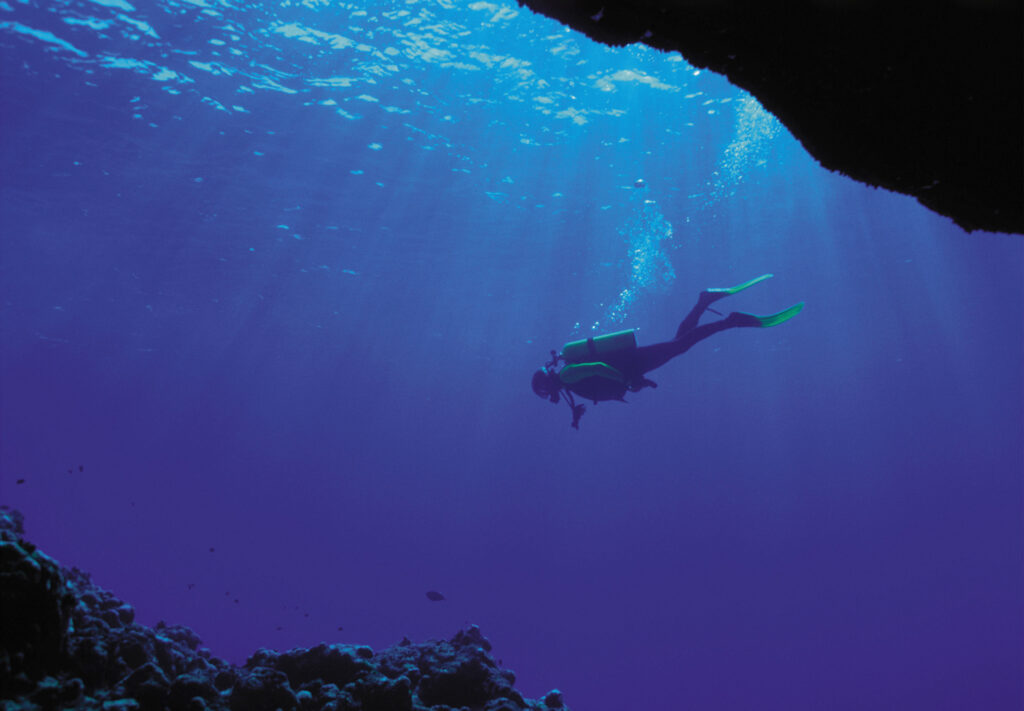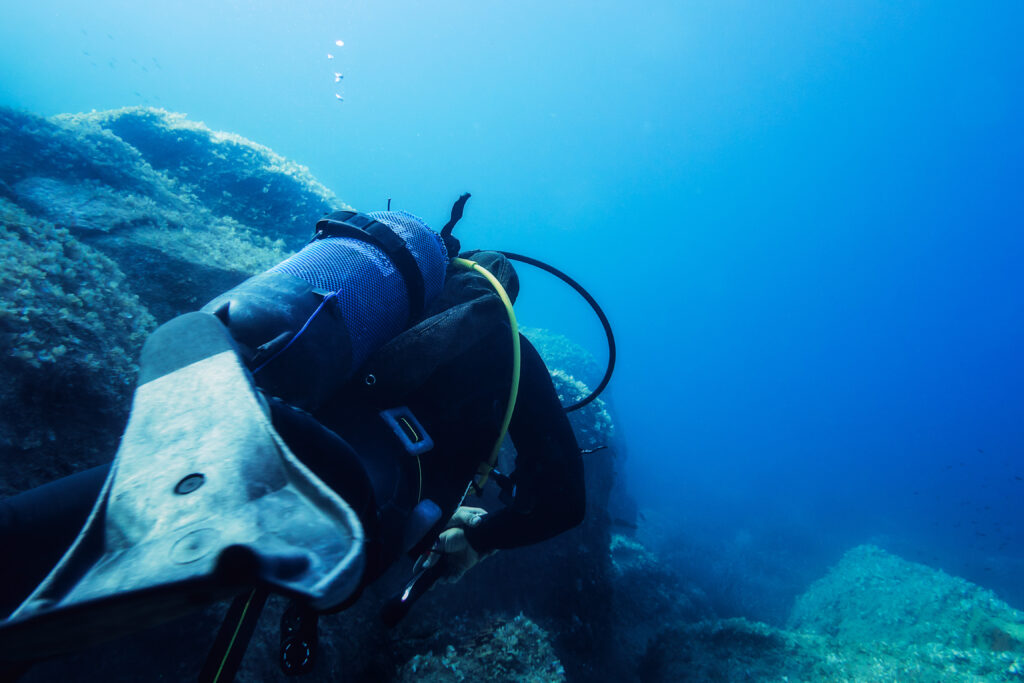What is No Mount Diving?

No mount diving is a specialized form of scuba diving that involves the diver carrying tanks and equipment separately from their body, usually holding or towing them instead of mounting them on a harness or backplate. This technique provides exceptional flexibility and maneuverability, particularly in environments that are too restrictive for traditional scuba gear setups. Originating from the need to navigate through tight underwater spaces, no mount diving has become a valuable technique in underwater exploration and technical diving circles, especially among cave divers and those exploring complex underwater structures.
What is Pressure?

Pressure is a fundamental concept in physics, defined as the force exerted per unit area. In the context of scuba diving, understanding pressure and its effects is crucial for safety and efficiency. Pressure plays a pivotal role in determining how divers experience the underwater environment, affecting everything from breathing to buoyancy. As divers descend into the water, the pressure increases, impacting both their equipment and bodies in significant ways. This article will discuss the principles of pressure, its effects on the human body, the health risks associated with changes in pressure, techniques for managing these changes, and the equipment designed to withstand them.
What is a Manifold?

A manifold in scuba diving is an essential component that plays a crucial role in connecting multiple tanks to provide divers with a continuous and reliable air supply. This device allows for the seamless integration of two or more tanks, ensuring that divers can manage their air reserves efficiently and safely. Manifolds are particularly important in technical and deep diving, where extended bottom times and redundancy in air supply are critical. By linking tanks together, a manifold provides divers with the flexibility to access a larger volume of air, enhancing their underwater experience and safety.
What is a Diver Propulsion Vehicle?

A Diver Propulsion Vehicle (DPV), also known as an underwater scooter, is a motorized device used by scuba divers to increase their range underwater with minimal physical exertion. By holding onto the DPV, divers can be pulled through the water at various speeds, allowing them to cover greater distances and access dive sites that would otherwise be challenging to reach. DPVs are used in various types of diving, from recreational to technical and even military applications, providing significant benefits in terms of efficiency and safety.
What Are Open Heel Fins?

Open heel fins are a type of swimming fin used primarily in scuba diving. They are designed with an open area at the heel, which is secured with an adjustable strap. This design contrasts with closed heel fins, which fully enclose the foot like a shoe. The open heel configuration allows for a more flexible fit, making them ideal for use with neoprene boots, which provide thermal protection and additional comfort. The ability to adjust the fit is particularly beneficial for divers who need to accommodate varying thicknesses of dive boots or who require a custom fit for optimal performance and comfort.
What is Residual Nitrogen Time?

The world of scuba diving is one that demands attention to detail, respect for the natural world, and an understanding of physics and physiology principles. One crucial concept in this respect is that of “Residual Nitrogen Time” (RNT), an integral part of dive planning that influences dive safety, duration, and depth. This concept revolves around the body’s nitrogen absorption and release processes, directly tied to decompression sickness prevention.
What is Actual Bottom Time (ABT)?

actual bottom time refers to the total amount of time that elapses from the moment a diver begins their descent until they initiate their ascent. During this period, the diver is submerged underwater, exploring marine life, inspecting underwater structures, or conducting scientific research. The calculation of actual bottom time is a critical aspect of dive planning and dive safety, as it has implications for decompression requirements, air supply management, and physiological considerations.
What is Slack Tide?

Slack tide is a critical concept in marine science and navigation, defined as the period when the water is completely unstressed between the ebb and flood of the tide. During this interval, the tidal current’s velocity is near zero, marking a brief moment of equilibrium in the ocean’s otherwise constant motion. For scuba divers, this phase offers a unique opportunity to experience the underwater world with minimal current interference, making it a favored time for diving activities. The significance of slack tide extends beyond recreational diving, impacting marine navigation and the behavior of various marine species.
What is a Submersible Pressure Gauge?

A submersible pressure gauge (SPG) is a vital piece of equipment for scuba divers, used to monitor the pressure of the air remaining in their diving tanks. This instrument is crucial for ensuring that divers have enough air to safely return to the surface. The SPG is typically connected to the diver’s first-stage regulator and displays the pressure in the tank in real-time, allowing divers to keep track of their air supply and manage their dive plans accordingly. By providing accurate and immediate feedback, the SPG helps prevent potentially dangerous situations caused by running out of air underwater.
What is Trimix?

Trimix is a specialized breathing gas mixture used by technical divers to safely reach greater depths than what is achievable with air or nitrox. Comprising oxygen, nitrogen, and helium, trimix helps mitigate the risks associated with deep diving, such as nitrogen narcosis and oxygen toxicity. By reducing the proportion of nitrogen and oxygen in the breathing mix, trimix allows divers to explore depths well beyond recreational limits while maintaining a safer physiological profile.
